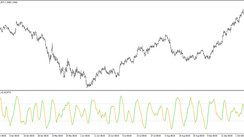Introduction: Understanding Currency Pairs and Time Frames
A currency pair stands as a critical benchmark in forex trading, signifying the relative worth of one currency against another. Consider, for instance, the EUR/USD pair. This illustrates the comparative value of the Euro against the US Dollar. The foreign exchange (forex) market, a global hub for currency pairs, reigns as the world's most substantial and fluid financial market.
Moreover, the concept of a 'time frame' is integral to this sphere, representing the duration in which currency valuations are analyzed. These can range from a minute, hour, day, week, month, or even a year. Time frames are instrumental for traders, enabling them to discern trends and price fluctuations in the currency market.
The Role of Currency in Selecting a Time Frame
When it comes to selecting a time frame for trading, the chosen currency indeed plays a significant role. Certain currencies exhibit greater volatility, affecting the optimal time frame for trading. For instance, the EUR/USD pair tends to be more volatile than its USD/JPY counterpart, implying a higher propensity for large price shifts within a short span. Therefore, day traders may be inclined towards shorter time frames, like the 15 or 30-minute charts, when dealing with the EUR/USD pair. On the other hand, swing traders might opt for longer durations like the 4-hour or daily charts.
In essence, the 'best' time frame doesn't adhere to a one-size-fits-all approach. It varies based on the trader's approach and the currency pair's volatility. Shorter time frames may appeal to day traders, whereas swing traders might lean towards longer durations.
Ideal Time Frames for Specific Currency Pairs
Let's delve into some exemplary time frames suitable for specific currency pairs:
-
EUR/USD: Given its higher volatility, day traders could prefer trading the EUR/USD pair within shorter time frames, like the 15 or 30-minute charts. On the contrary, swing traders might select longer time frames, such as the 4-hour or daily charts.
-
USD/JPY: This pair generally showcases lesser volatility than the EUR/USD pair. Hence, swing traders and position traders might lean towards longer durations, such as the 4-hour or daily charts, for trading the USD/JPY pair.
-
GBP/USD: The volatility of this pair falls between the EUR/USD and USD/JPY pairs. Therefore, day traders, swing traders, and position traders may choose to trade the GBP/USD pair across various time frames, depending on their unique trading style and preferences.
The Impact of Incompatibility on Profitability
Indeed, the profitability of trading can be undermined by the incompatibility between the currency pair and the chosen time frame. For example, a trader operating within a short-term time frame with a relatively stable currency pair might struggle to find sufficient price changes to generate profits. Conversely, a trader employing a long-term time frame for a highly volatile currency pair might be subject to excessive risk.
Conclusion: The Interplay Between Currency Pairs and Time Frames
For successful forex trading, a keen understanding of currency pairs and time frames is indispensable. Identifying the ideal combination involves exploration and finding what aligns best with your trading style and preferences.





